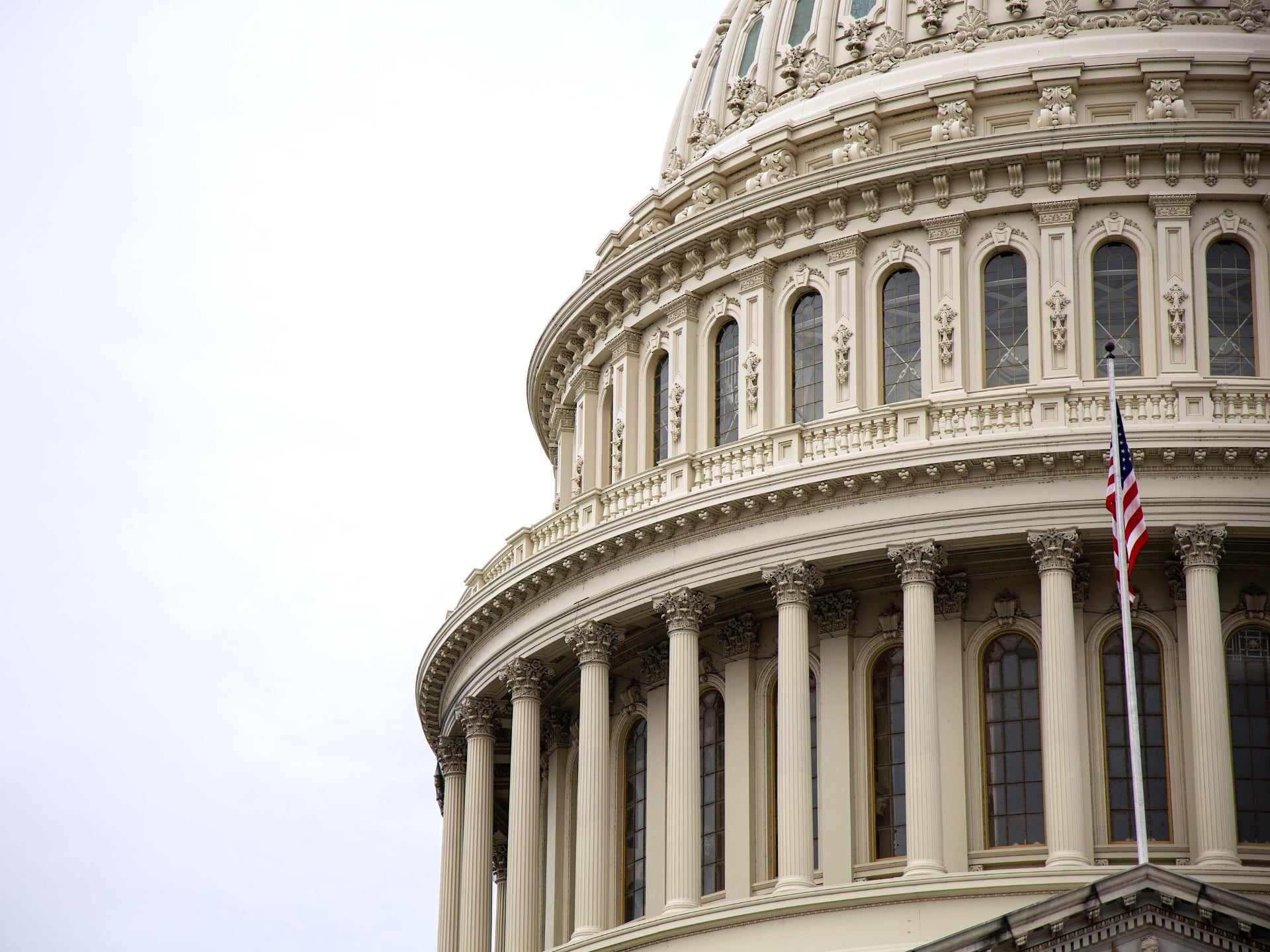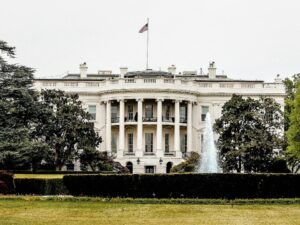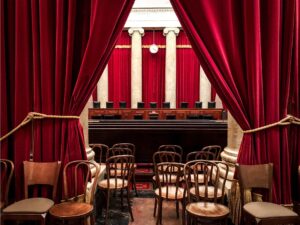There are so many expressed powers of Congress listed in the Constitution it can be overwhelming to cover them all without feeling like you’re rattling off a never-ending list.
And then what do you have students do after you’ve covered them? The first step of introducing content like this is always easy—give students a lecture, a textbook reading, or a video to watch. But then what?
Over the years, I’ve flushed out my once-boring powers of Congress lecture to include collaborative activities. Students now examine these powers from two different angles, which has really made this seemingly dry content much more intriguing and real-world.
Below, I share my lesson sequence for teaching the expressed powers of Congress in my high school Civics and Government class. But first, let’s go over the basics of these powers and why they are so crucial to cover well in your legislative branch unit.
What are the Powers of Congress?
Constitutional experts generally agree there are 27 total expressed powers of Congress, meaning the Constitution explicitly lists 27 things that Congress has the power to do.
Most are contained in a straightforward list within Article 1. These are the ones people traditionally associate with Congress—what it can pass laws about, like taxes and post offices.
The others are scattered throughout the rest of the Constitution and Amendments.
Additionally, over time, because of the Necessary and Proper Clause and various Supreme Court rulings, Congress has gained a handful of implied powers, too.
With my on-level students, I focus our limited time on the 18 powers listed in Article 1. The other nine are better suited for other units since they deal with things like the Electoral College and setting up the lower federal courts.
I further group those 18 into a few broad categories because many are so similar, like maintaining the Army and the Navy. Anytime you can consolidate a long list of information, do it! It helps with student comprehension and engagement.
Why are the Powers of Congress Important?
The Framers very deliberately designed Congress to be the most powerful branch (there were no such “three equal branches” as we teach it today). Still, they also deliberately designed the new government not to be all-powerful.
By creating an explicit list, the Framers both granted and limited the powers of Congress. Check out this blog post to learn how I teach the principles of the Constitution, like limited government.
Lesson Ideas for Teaching the Powers of Congress
Since there’s so much to each of these powers, you’ve really got to avoid straight lecturing this. I use this topic as a chance to connect back to the principle of limited government and to dive into some landmark legislation that illustrates each of these powers.
I spend about three class periods doing these activities. Head to my store if you want all these as a done-for-you lesson kit.
1. Paraphrase the Constitutional Wording
First, give students the text of Article I, Section 8, where the list of 18 expressed power is located. Never skip the opportunity to bring the original source to students!
I show students the full text of Section 8 as I introduce the lesson, but here is where I have them work with a pre-categorized version to help this part of the lesson go faster.
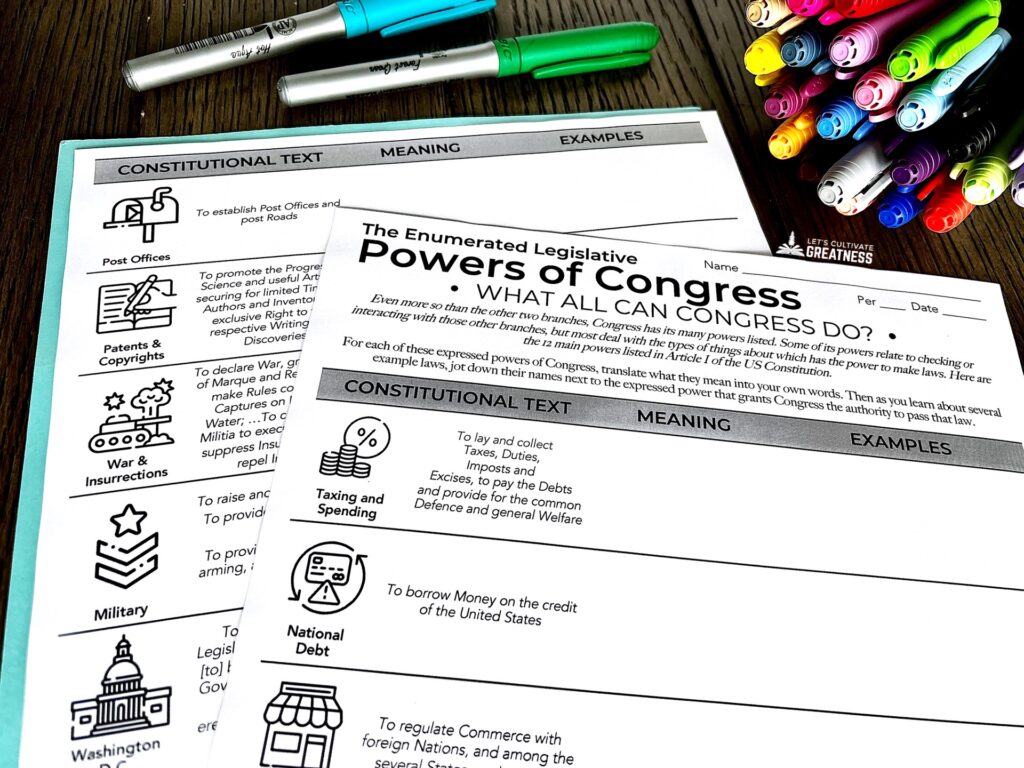
You can go through each power as a class, or assign students to work in small groups or in a jigsaw to paraphrase each off to the side on their sheet.
I like to do this as a class to make sure there aren’t any misunderstandings. And since they are pretty straightforward, students can paraphrase them pretty quickly.
2. Provide Simple Visual Examples
I like to have slides with the text of each power and a large image to illustrate each of them.
Any time I can add in visuals, I do. This isn’t just an ELL strategy—everyone benefits from seeing what they are learning.
I keep the slide images universal—someone filling in their tax return for the power to tax or a busy port full of container ships for the power to regulate commerce. I also include icon images on their notes sheet.
The more specific examples come next.
3. Examine Major Legislation Examples
After introducing these powers, students are ready to explore real examples.
This does require a bit of digging, especially since there aren’t quite the same lists for so-called landmark legislation as for landmark Supreme Court cases.
I picked a dozen laws covering all the powers (some laws touch on multiple powers) as my stations. I also picked laws my students would think are interesting and that illustrate the varied examples of how Congress works to pass these laws.
For example, the Music Modernization Act of 2018, which addresses streaming music, is a great example of Congress’s power to pass copyright laws and a rare instance of a bill that received a unanimous Senate vote.
Or, the War Powers Resolution of 1973. Though sometimes referred to as an Act, it was passed as a resolution, another slightly different option that Congress has.
I also love using the boring-sounding Taxpayer Relief Act of 1997 because it shows Congress not taxing money when it created the Roth IRA. This program has evolved over the years, also showing how Congress makes updates by passing new laws.
I post stations around the room with summaries of these example landmark laws. If you have a little more time, you could assign students laws to research and summarize themselves.
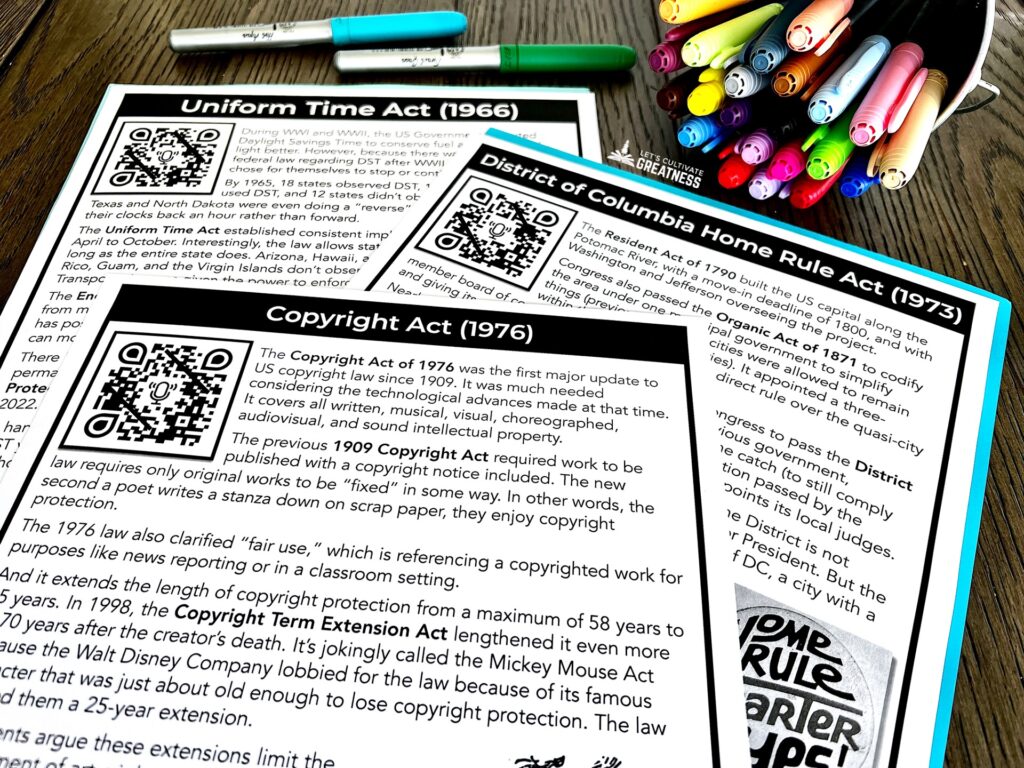
As students circulate throughout these stations, they determine which powers allow Congress to have passed that law and jot them down on their notes.
The trick is not to say explicitly which expressed power the law is, but some will be pretty obvious!
4. Reexamine Powers from a Different Angle
This last activity is my favorite—having students revisit each of these laws, but this time from the angle of how they got passed and implemented. This can be done in various ways: a scavenger hunt, a quiz game, or matching cards.
Type the law names and unique characteristics (ex., unanimously passed by the Senate, passed over the President’s veto) on cards for students in small groups to match. Or just give out the characteristic cards for students to attach to the station sheets. These can be done as a race if your students are competitive.
You could also do this as a quiz game using a program like Kahoot, with questions starting with “What’s a law that…”
All three of these options are included in my ready-made kit.
And that’s it! In just a few days, you’ve covered two core aspects of the legislative branch—Congress’s expressed powers and how bills become laws.
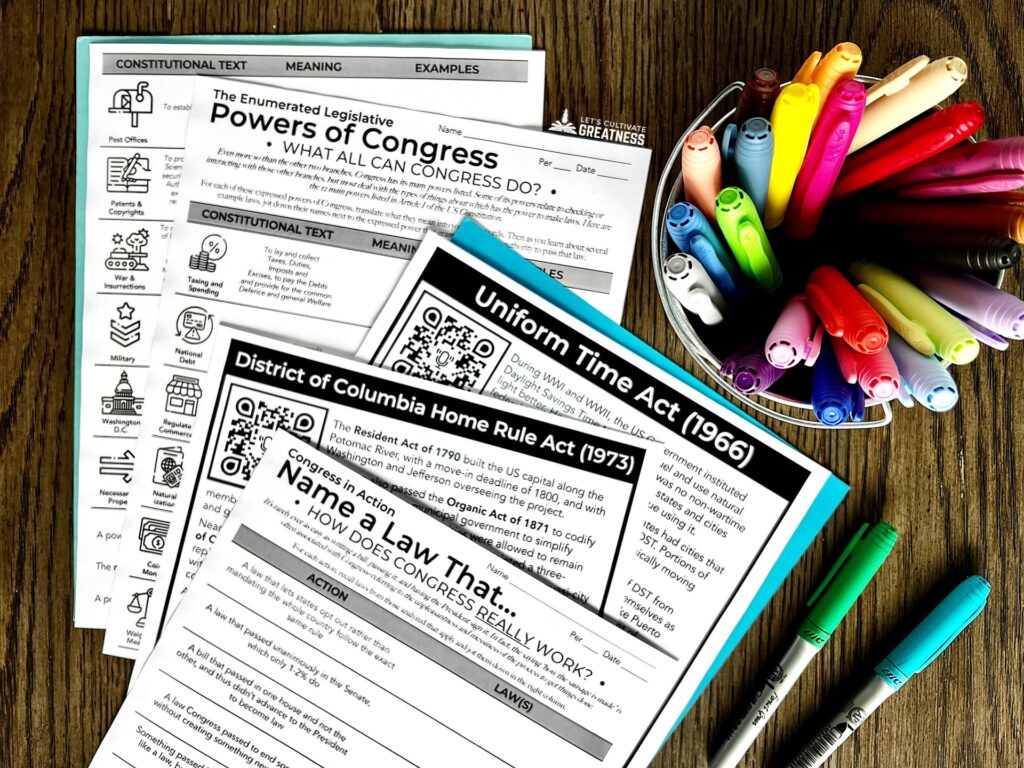
Grab my Powers of Congress activity kit if you want a done-for-you lesson sequence to cover the basics of the Legislative Branch for your Civics or Government class in just a few class periods.
Feature image photo credit: Josh Sukoff

